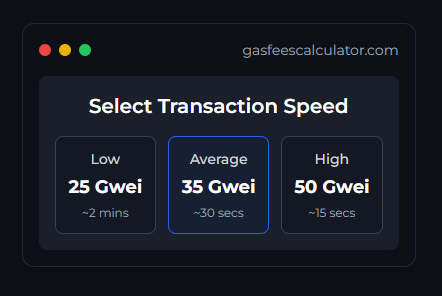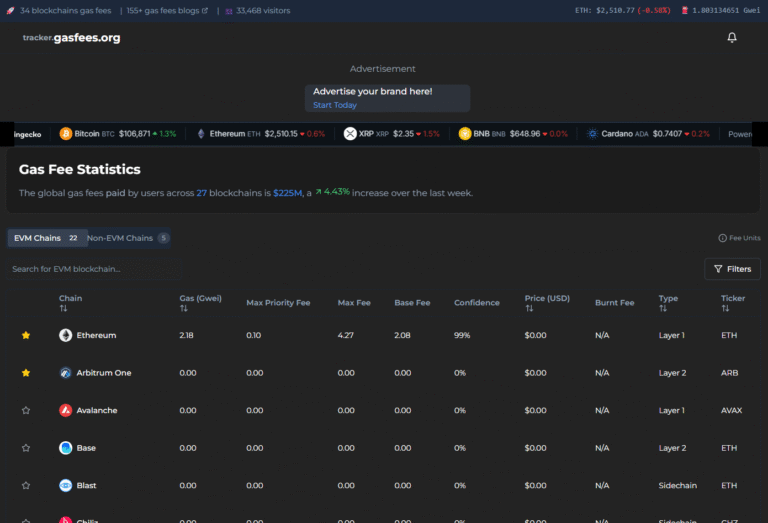
What Are Cronos Gas Fees?
In the ever-evolving world of blockchain technology, innovation is the name of the game. Among the recent entrants, Cronos has made waves with its Layer 2 scaling solution within the Cosmos ecosystem.
At the heart of this innovation are Cronos gas fees, the essential costs incurred when interacting with the Cronos blockchain.
Understanding Cronos Gas Fees
Before we dive into the specifics of Cronos gas fees, let’s establish a foundational understanding of the concept. Gas fees, in the realm of blockchain, are transaction costs that users pay for utilizing a blockchain network. These fees serve a dual purpose: compensating network validators or miners for processing transactions and acting as a deterrent against misuse or spam on the network.
Cronos: A Beacon of Efficiency in the Cosmos Ecosystem
Cronos stands out as a remarkable addition to the blockchain space, offering Layer 2 scaling solutions that promise faster and more cost-effective transactions. As a vital part of the Cosmos ecosystem, Cronos has a pivotal role in enhancing the capabilities of the broader network.
Unpacking Cronos Gas Fees
Cronos gas fees, as the name suggests, are the costs associated with using the Cronos blockchain. These fees are instrumental in ensuring the seamless operation of the network and are indispensable for a wide range of blockchain activities, including asset transfers, deploying smart contracts, and interacting with decentralized applications (dApps).
Advantages of Cronos Gas Fees
- Cost-Effective Transactions: One of the primary advantages of Cronos gas fees is their affordability. Cronos is designed to offer transactions at a fraction of the cost seen on other blockchain networks, making it an attractive choice for users and developers alike.
- Lightning-Fast Transaction Speeds: Cronos boasts impressive transaction speeds, thanks to its Layer 2 scaling solutions. This efficiency translates into minimal delays and enhanced user experiences, all while maintaining cost-effectiveness.
- Scalability: Scalability is at the core of Cronos’ design philosophy. The network’s architecture and scaling solutions allow it to efficiently handle increased demand, effectively reducing congestion and the risk of high gas fees during peak usage.
Factors Influencing Cronos Gas Fees
Several factors come into play when determining Cronos gas fees:
- Network Demand: As with most blockchain networks, Cronos gas fees can fluctuate based on the level of network demand. During periods of heightened activity, gas fees may experience slight variations, but they generally remain affordable.
- Transaction Complexity: The complexity of a transaction or smart contract execution directly impacts gas fees. More intricate operations demand more computational resources and may result in higher fees.
- Gas Limit: Users can set a gas limit for their transactions, determining the maximum amount of gas they are willing to consume. Transactions that reach this limit without completing may still incur fees.
The Role of Gas Price
In addition to conventional gas fees, Cronos users can specify a gas price when submitting transactions. The gas price represents the amount a user is willing to pay per unit of gas consumed. Validators prioritize transactions with higher gas prices, ensuring prompt processing.
Implications for Decentralized Applications (dApps)
Cronos’ low gas fees hold profound implications for the world of decentralized applications (dApps). Both developers and users benefit from the cost-effective and efficient environment that Cronos offers. Here’s how:
- Enhanced User Experience: Users of Cronos-based dApps enjoy seamless interactions with minimal transaction costs. This improved user experience can lead to greater dApp adoption.
- Cost-Efficient Development: Developers building on Cronos appreciate the reduced cost of deploying and executing smart contracts. Lower gas fees translate to more affordable development and testing processes.
- DeFi Appeal: Decentralized finance (DeFi) projects, which often involve frequent transactions and interactions with smart contracts, find Cronos’ low gas fees highly appealing. Users can participate in DeFi activities without the burden of high transaction costs.
Strategies for Optimizing Cronos Gas Fees
While Cronos gas fees are generally low, effective management is crucial, especially during periods of high demand. Here are some strategies to optimize your Cronos gas fee experience:
- Gas Price Optimization: Set an appropriate gas price based on your transaction’s urgency. Lower gas prices may result in slightly slower processing times but can lead to cost savings.
- Off-Peak Transactions: Whenever feasible, conduct transactions during periods of lower network activity to avoid congestion-related fee increases.
- Gas Limit Setting: Carefully define the gas limit for your transactions, aligning it with the complexity of the operation. Avoid unnecessarily high gas limits to minimize costs.
- Batch Transactions: If you have multiple transactions to execute, consider batching them. This can reduce the overall gas fees incurred.
The Future of Cronos Gas Fees
As the Cronos blockchain continues to evolve and attract more users and developers, gas fees remain a critical consideration. The development community actively explores solutions to further enhance scalability and reduce gas fees, ultimately aiming to provide an even more cost-effective and efficient blockchain experience.
In the ever-expanding realm of blockchain technology, Cronos shines as a beacon of efficiency, characterized by swift transaction speeds and budget-friendly transactions. Cronos gas fees lie at the heart of this efficiency, offering users an affordable and scalable blockchain experience. As blockchain adoption continues to surge, understanding and optimizing gas fees, particularly on innovative platforms like Cronos, is pivotal for maximizing the benefits of decentralized applications and financial transactions. With its low gas fees and impressive throughput, Cronos is well-positioned to remain a dominant force in the blockchain ecosystem, paving the way for a more accessible and user-friendly decentralized future.
Resources for Understanding Cronos Gas Fees:
Official Resources:
- Cronos Documentation: https://cronos.org/docs
- Cronos Chain Explorer Average Gas Price Chart: https://cronoscan.com/chart/gasprice
- Cronos Bridge FAQs: https://docs.cronos.org/for-users/bridge/other_chain/webapp
- Cronos Gas Fees: https://wiki.defillama.com/w/index.php?title=Gas_fees&mobileaction=toggle_view_desktop
Tools and Services:
- CronoScan: https://cronoscan.com/ – Explore and search the CronoScan blockchain for gas prices, transactions, and other activities.
- Gas Tracker: https://cronoscan.com/ – Real-time gas price tracker for the Cronos network.
- Bridge Estimator: https://docs.cronos.org/for-users/bridge/other_chain/webapp – Estimate the gas fees for bridging assets between Cronos and other blockchains.
News and Articles:
-
- What Is Ethereum Gas? – Crypto.com: https://help.crypto.com/en/articles/4382974-are-there-any-transaction-fees-with-crypto-com-pay
- Cronos fees – DefiLlama: https://wiki.defillama.com/w/index.php?title=Gas_fees&mobileaction=toggle_view_desktop
Community and Forums:
- Cronos Official Telegram: https://t.me/CryptoComOfficial
- Cronos Discord: https://discord.com/invite/cronos
- Cronos Reddit: https://www.reddit.com/r/Cronos/
Additional Resources:
- Dual-Mining System on Cronos: https://cronos.org/docs – Learn about Cronos’ unique mining system and its impact on gas fees.
- Cronos Roadmap: https://cronos.org/docs – Stay updated on upcoming developments that might affect gas fees.
Bonus Tip: Follow @CronosChain on Twitter for the latest updates and announcements related to gas fees and other network developments.
By exploring these resources, you can gain a comprehensive understanding of Cronos gas fees, including their dynamics, factors influencing them, and how to navigate them effectively. Remember, staying informed and engaged with the Cronos community is key to optimizing your blockchain experience.
I hope this helps! Let me know if you have any other questions about Cronos gas fees.




